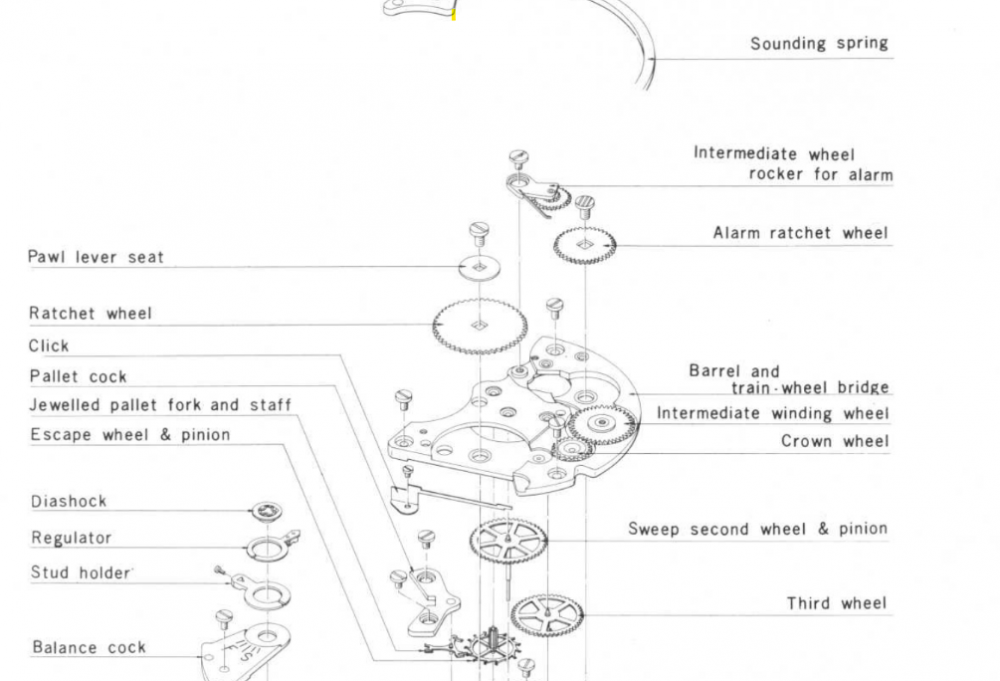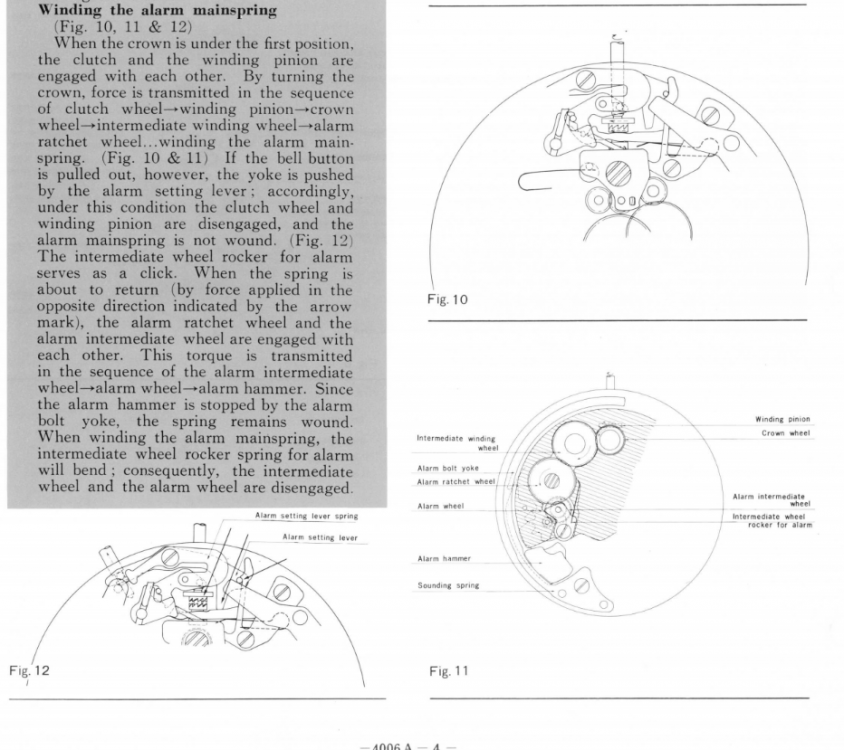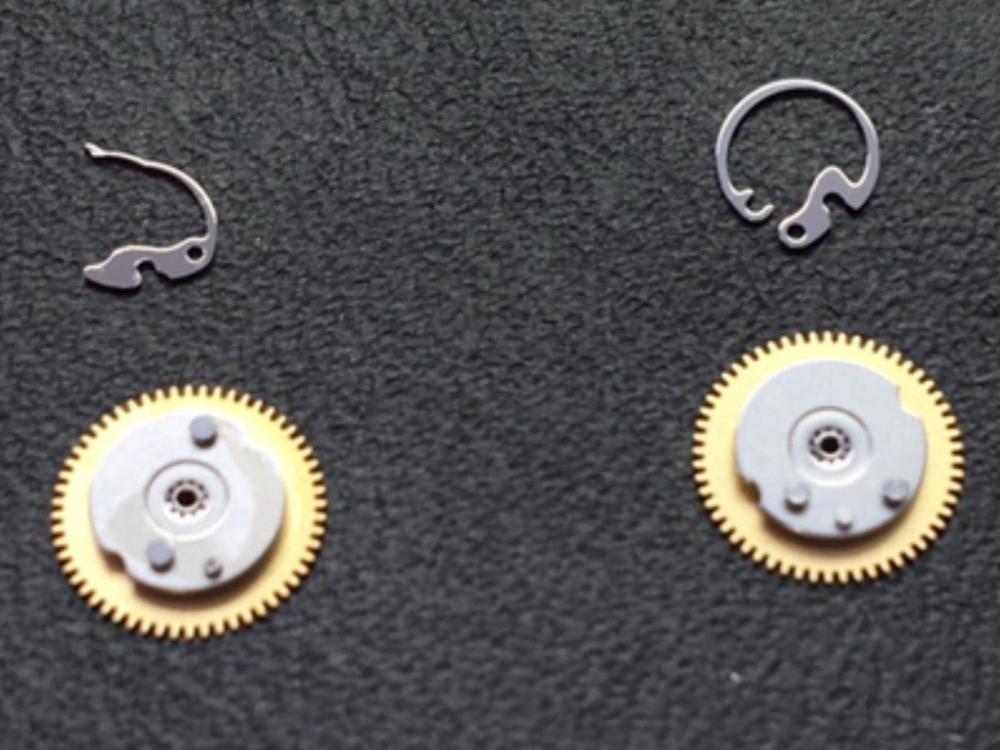Leaderboard
Popular Content
Showing content with the highest reputation on 05/24/22 in all areas
-
One of the big selling points of the Seitz tools and jewel sets was for replacing jewels in old watches that had rubbed-in jewels. There you definitely need to ream the hole out to a larger size. Unfortunately that usually meant a much larger size, and the repair was rather ugly, so most good repairers try/tried to replace with another rub-in jewel if possible*. But more commonly, and to answer your question, yes, often one will ream a size or two up simply because they don't have the appropriate jewel on hand, or it doesn't exist in the set or at a supplier. If you look at the chart there are many gaps in external diameters; I am quite sure that in the past there were more sizes available, but even old very complete sets don't necessarily have every single diameter for every hole size. *I have loads of old rub-in jewels, but they tend to be in random assortments, and even if you luck out and find one that fits the pivot size it very likely won't be the right outside diameter- and even then, they are often too thick or too thin to set correctly. To do a tidy repair I will often turn a bushing that fits the original setting, with an appropriate hole for a friction jewel, and fit it all up. If done with some care the repair is usually almost invisible, other than the fact that many older jewels are more pinkish, and new ones a deep red.4 points
-
2 points
-
Hello and welcome. I'm a reasonable newbie myself, servicing I'm getting good at, repair is a different matter. Unfortunately the parts aren't always interchangeable, in fact seldom are. I've learnt the hard way.1 point
-
Can‘t answer the question, but the broken spring issue on this calibre is well known. As many people had watches with that damage Rolex modified the design of the spring and the wheel to solve the problem. Left old version, right new version. Be sure to get the new version. Afaik there were no further complaints with this.1 point
-
Hello and welcome to the forum. the watch is a five bar french/swiss made cylinder movement you will probably have to trawl the net/ebay for bits. I believe Old Hippy mentioned that these are the devils own find bits for as they are almost individualy made and as such parts dont interchance easily or not at all.1 point
-
Ideally you want one of these balance-assembly-holder But I make do by using a staking block - sit the balance in a suitable hole, hold it down, and it's off the desk so you can get a screwdriver in from the side. But, there's the danger of slipping and damaging the hairspring1 point
-
Where's the balance? Buy yourself some working movements because you'll know it's your mistake if it doesn't run once reassembled.1 point
-
Seitz and Chatons SA both use a spindle with a tapered bore, and the reamers have a corresponding taper. That's a good way of holding tooling securely and concentrically. Horia and Favorite use a spindle that takes Schaublin P4.5 collets. That's also a good way to hold things securely and concentrically. As Chatons SA and Favorite are defunct, they don't really matter- but I have a Chatons SA spindle and reamer set that are absolutely superb quality, and I use them in my Horia tool. It doesn't really matter which system you use; the reamers are about the same price from Seitz or Horia, but the spindle is indeed more expensive from Horia. One distinct advantage with the Horia (Favorite is the same), is if you get a few collets, 1mm, 1.5mm, 2mm, you can also hold standard drills and taps with it. So from that perspective if I was to choose one over the other, I would get the Horia. I also imagine their reamers are higher quality than Seitz, but I don't have them so can't say for sure.1 point
-
unfortunately in learning watch repair hairspring accidents happen a lot. technically we also need a picture looking straight down at the balance wheel in the watch so we can see if the hairspring is centered. Because it looks like you're over coil isn't quite where it's supposed to be at least the ones that I typically see. one of the problems you have with YouTube videos on lots of stuff is they make it look easy. This came up recently with someone having an issue with a mainspring they destroyed their mainspring while saying the videos made it look so simple. so unfortunately the videos that make it look so simple give the impression that you can just watch a video and fix your hairspring isn't going to happen. which you need to do is find something that's disposable and practice bending your hairspring. Practice bending it at the stud practice bending it up and down practice just bending it practice bending the stud out and then bending it back in just get a feel for what it feels like it takes time lots of time to be gutted hairsprings. Fixing over coils can take time lots of time I once spent hours of time fixing over coil because someone perceived that they were centering the hairspring and no they didn't do it right. then from casual observance as they hairspring is bent up invisibly it no longer looks straight from the stud outward it just needs to be bent or pushed downwards a little bit. But you also look at the overall hairspring and see if the entire hairspring is pulled up because they hairspring is up rubbing on the bridge. So basically the casual observance is its bent at the stud and it goes upwards doesn't look like you bent they hairspring itself in the peculiar bend hopefully. Then as I said it looks like the over coil in relationship the stud is in the wrong place know it's the stud is out too far I would draw you a picture of that but I really want to see the hairspring back in the watch. Then as far as fixing they hairspring at least the bending down that has to be done in the watch so you can see what you're doing providing you understand what you're doing and why you're doing it. The other of the over coil stud being out too far that will have to be done out of the watch at least that's the way I would typically do it. But no matter what your the eyes in the field you have to look at it you have to make the decision where you think the bend is because pictures sometimes can be misleading. Then if you do make abandon it doesn't fix anything make sure you put it back because we don't want to make things worse. But I was still practice on something first.1 point
-
Ideally you don't ream the hole; you have a replacement jewel that is the same size. If reaming is necessary, it's best to do as little as possible. Jewels are standard in industry in that they do (with very rare exception) stick with nominal sizes in 0.10mm increments in the smaller sizes, with the jumps getting more spaced out in the larger diameters. Jewels for the same component are often different diameters for mainplate and bridge. Often smaller on the mainplate.1 point
-
I have Seitz, Favorite, Chatons SA, and Horia lever type tools. All interchange fine, all are 8mm. Well, one of my Horia tools, a very old one, has the hole every so slightly small, so it can be a little tight with some spindles. If I ever get motivated enough I'll run an 8mm reamer through it. Of all of them I consider the Seitz the lowest quality, so not too surprised if they might have an issue here or there. As they were mostly made from some sort of light castable alloy that does seem to oxidize, I could see that one might have some oxidation in the hole that would bind on some spindles.1 point
-
1 point
-
Hi. Naptha is a fair option for a beginner and yes the parts need to be spotlessly clean to run smoothly. Break down watch assembly checks into stages. A running issue can be a myriad of causes in a fully assembled watch not so easy to identify without a timegrapher. Work on each stage individually checking components as you go. Start with the main engine, without sufficient power the watch wont run or will run poorly. So barrel and mainspring components to be thoroughly inspected for wear and compatibility as parts may have been changed previously and be incorrect. When all is good there move onto the train assembly checking all pivots and jewels along the way. Next the escapement, make sure power is being delivered through the train upto the escapement. Check for free running of all the train wheels by applying some wind to the barrel, you should have a nice smooth run of them with no wobbly wheels . The train should come to a long slow steady finish with no abrupt stopping or halting, with a few seconds of backspin on the escape wheel. Next the pallet fork to go in, check for the snap back and forth and locking and unlocking on the escape wheel teeth. Finally fit the balance, i prefer to fit the balance before everything else and check that is working ok with no visual hindrance from other components. Easier as well to set up the intial beat error if there is no adjustment arm. Then remove it and reinstall it after the escapement. This way pivots can be checked and any hairspring adjustments can be made a lot easier. So finally refit the balance assembly and hopefully you've ironed out most issues to allow a good intial heartbeat after a good wind up. Watch the hairspring breathe and inspect it from all angles to see how it interacts with everything around it. Look at its centering and for nice concentric coils with no coning of them. This is usually were most faults will lay, with it being such an integral and delicate piece. So thorough staged inspections. I'm sure you will have plenty of questions along the way but there are many good friendly knowledgeable folk here to help you.1 point
-
1 point
-
Look at this pile of hideous junk. Bid high to buy your dream clock. https://www.ebay.co.uk/itm/334450175898?hash=item4ddec8af9a:g:BpgAAOSwAiRiiqQE1 point
-
I would recommend a 6119 or 6309. Plenty around and cheap enough. The reason I wouldn't recommend the 7009 and the 7s26 is that they are not as easy to get running right. The 6xxx series has a larger balance and I think that the hairspring is of better quality. The 7s26 with its rectangular balance jewel spring is a challenge for a newby. I come across a lot of 6xxx and 7xxx watches and the 6xxx doesn't give much problems. Usually the only worn part is the automatic weight bearing and that happens on the 7xxx series as well. Anilv1 point
-
Welcome to the forum bruh. Always good to get something going again.1 point
-
When I started I got a bunch of Seiko 5's of eBay, didn't pay more than £15 for any of them with most costing about £10, and that was often a complete watch. Seiko have fitted many different movements to the 5 case so you get a few different versions to work on, I found the ones with 7009a or 6309 movements the easiest to learn on and the easiest to get parts for. Talking of parts, I found it cheaper in the long run when a part is needed, because I found it broke or I broke it just to buy another movement and strip it for parts as I found the second hand parts sellers are basing their prices on new parts prices which is often higher than a whole second hand movement, that should also gives you spares for the next one, as long as you don't always break the same part. Good luck in your journey.1 point
-
Most jeweling tools came with D shaped broaches. Favorite used 5 sided, and as you have noted Horia offers both. Their take is the 5 sided to rough, D to finish. The D do fine on their own, really no need for both. I have Favorite 5 sided and Chatons SA D shape, actually prefer the Chatons SA (Seitz, in spite of being the most common tool, in my opinion is the lowest quality [their jewels aren't great either]). I don't like broaching more than one "size" at a time*, so I go progressively through until the size needed, usually. But just today, I wanted to fit a bushing for the mainplate side of a barrel, and went straight from the original 0.8mm hole to 1.5mm and it worked great. *I have a lathe permanently set up for faceplate work, with optical centering and all that, and use that for critical work where drifting a hole even 0.01mm might spell disaster. But used with care jeweling reamers will keep hole location pretty well.1 point









